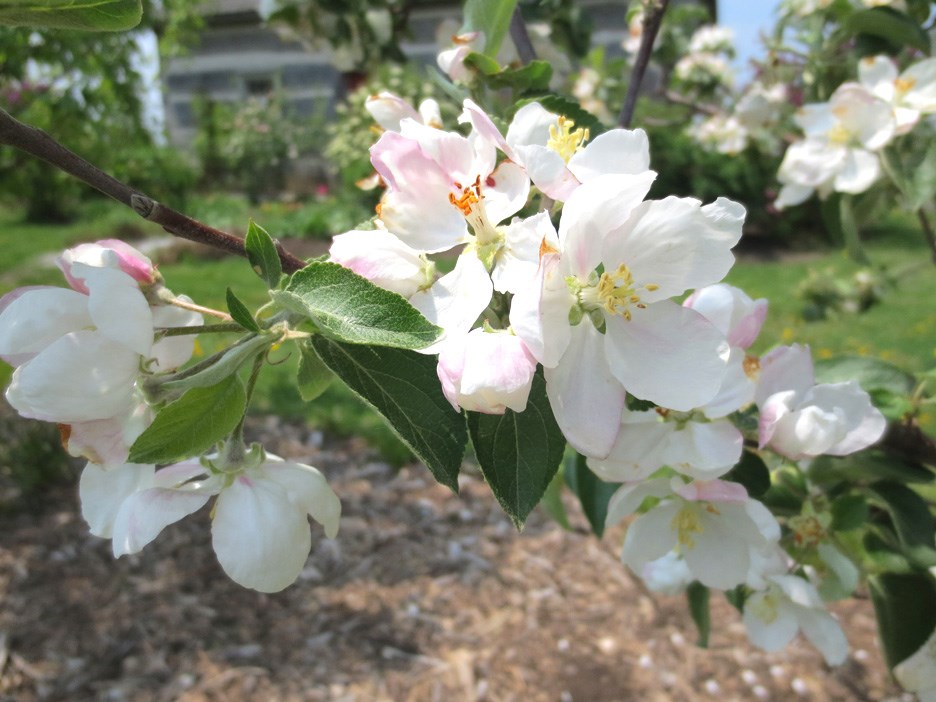When is a garden-variety plant more than a plant?
When it provides multiple functions. Take flowering trees and shrubs that produce fruit, for example. While the flowers bring joy and energy to your garden, (not to mention an abundance of pollen for pollinating insects and hummingbirds) the fruit can be useful, even if it is not edible to humans.
Many birds enjoy foraging the fruit as it matures. Right now, cedar wax wings are flocking to Mark’s 27 crabapple trees. While the fruit was born on the trees last year, it survived the winter and is now distilled enough to attract hungry birds.
This is the perfect time of year to consider adding some permanent trees and shrubs to your yard that will give you multiple levels of satisfaction and pleasure. Retailers are loaded up with inventory of stock and this weekend is a great time to plant.
Here are our favourites:
Mountain Ash(Sorbus aucuparia) European Mountain Ash has been a favourite specimen tree for generations. Brilliant in spring with masses of umbel shaped flowers followed by clusters of bright orange fruit hanging like small Christmas ornaments in autumn. A favourite of cardinals and wax wings and Baltimore orioles. A great tree for a small to medium sized yard. The variety Cardinal Royal matures to 10 meters high and 5 meters wide.
Mulberry (Morus) The weeping varieties of mulberry were once very popular, but now the Russian mulberry standard tree has become a great choice for small gardens. Be sure to buy a fruiting variety if you want the fruit. We have received more than one complaint that the fruit is “dirty” especially when the tree is located near a driveway. Mulberry juice is not a joy to remove from the finish of your car. However, tucked into a corner of your yard, this tree will provide lots of entertainment as monarch butterflies are drawn to the blooms. Robins and other birds flock to it when the berries become ripe mid-summer.
Serviceberry(Amelanchier canadensis) A prolific bloomer that greets the spring with some of the earliest colour in the neighborhood. Mark has 16 of these, where they take the spotlight not once but twice every season. In late April/early May, the soft white flowers appear, followed by early summer purple fruit that attract a variety of birds. Serviceberry lends itself well to pruning and shaping, so it works well in tight spaces. In an open area, it will grow up to 7 meters tall. Very winter hardy. Native.
Edibles: don’t ignore edible fruiting plants. All of them must flower before they produce fruit, that is an irrefutable law of nature. Some put on a great show in spring: apples, pears, cherries, plums and peaches, to name a few. Some produce an abundance of fruit reliably. Apples and pears come to mind, as they are reliably winter hardy, regardless of winter weather.
Keep in mind that songbirds are not attracted to most edible fruit, cherries being a notable exception. When fruit is left on the tree or the ground beneath, wasps are attracted to the sweet, rotting pulp. It is a good policy to commit yourself to picking fruit when it becomes ripe whether you plan on using it or not.
Mark Cullen is an expert gardener, author, broadcaster, tree advocate and Member of the Order of Canada. His son Ben is a fourth-generation urban gardener and graduate of University of Guelph and Dalhousie University in Halifax. Follow them at markcullen.com, @markcullengardening, and on Facebook.



